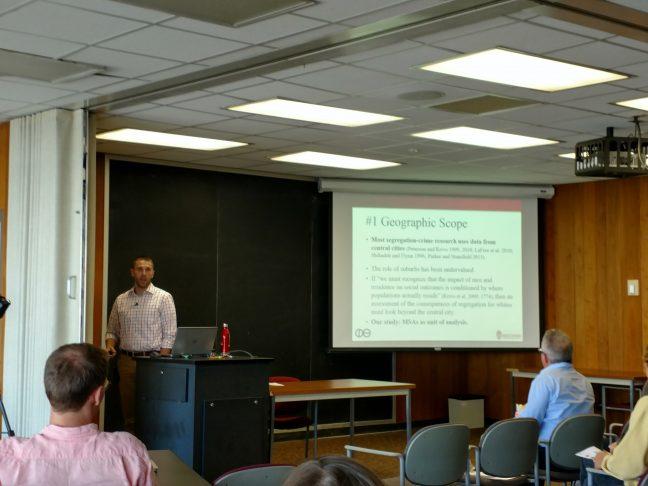In a presentation of his findings on the correlation between racial segregation and homicide rates Thursday afternoon, a University of Wisconsin professor said his research found racial segregation has contributed to the disparity between black and white homicide rates.
In an event hosted by the Institute for Research on Poverty, Michael Light, associate professor of sociology and Chican@/Latin@ studies, concluded that, based on his research, segregation simultaneously harms black people while benefiting white people in the U.S.
His research also found segregation plays a fundamental role in explaining black and white inequality even after controlling for racial economic disparities, incarceration rates, police per capita and a number of other inequalities that influence homicide rates.
“What this means is that despite the fact that the most segregated [metropolitan statistical areas] are often some of the most dangerous … whites essentially don’t seem to see much of a penalty for living in those [areas],” Light said.
UW professor discusses racial disparities in criminal justice system, mass incarceration
These findings undermine the belief among some researchers that racial integration has not been significant in bridging the gap in racial inequality between black and white Americans, Light said.
“For homicide and violent crime, it seems to be playing a very transformative role,” Light said.
Light highlighted two research papers that had been conducted to examine the relationship between segregation and crime. The first, written by Lauren J. Krivo, Ruth D. Peterson and Danielle C. Kuhl, argued racial segregation hurt both black and white communities because it contributed to social disorganization. The second, written by Douglas Massey, argued white communities benefited from segregation because it concentrated crime in black communities while shielding whites from the same social problems.
In his own research, Light attempted to address four methodological issues in existing bodies of work. He said existing studies of segregation focusing exclusively on urban metropolitan areas were too narrow because most white people live in the suburbs surrounding cities, not within the cities themselves.
“The story of segregation is not here,” Light said, gesturing to the central urban area of the map of Detroit showing the inner city populated mostly by black people and the surrounding suburbs populated mostly by white people. “It’s all around here.”
As Wisconsin overhauls welfare programs, UW offers new anti-poverty solutions
Light also said most research fails to look at data over time, which makes it impossible to study the changes in homicide levels as racial segregation and inequality in homicide has decreased over time.
Concluding, Light said it is faulty to infer that high crime is the cause of segregation, when the opposite could be an alternative explanation.
“There’s a very plausible reason to think that the causal arrow could operate the other way,” Light said. “That is that places that have higher rates of crime often lead to more segregation.”













